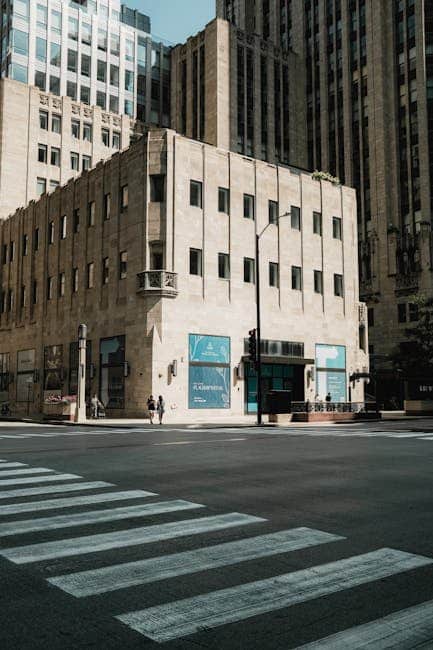The Chicago River: Its History and Transformation
The Chicago River is more than just a body of water running through the heart of the Windy City. It’s a testament to human ingenuity, resilience, and the ongoing commitment to environmental restoration. From its humble beginnings as an essential trade route for Native Americans to its revolutionary engineering transformation, the Chicago River’s story is as winding as its path. Join me as we delve into the fascinating history and transformation of this iconic river.
Table of Contents
1. A River’s Beginnings: The Early Days
2. Engineering Marvel: Reversing the Flow
3. Industrialization and Its Discontents
4. The Revival: Environmental and Urban Renewal
5. The Chicago River Today: A Symbol of Resilience
6. FAQs
A River’s Beginnings: The Early Days
Long before skyscrapers lined its banks, the Chicago River was a vital artery for the Native American tribes inhabiting the region. Known for its strategic location, the river served as an essential link between the Great Lakes and the Mississippi River watershed. The river’s name itself is believed to derive from the Native American word “shikaakwa,” referring to the wild leeks that once flourished along its banks.
As European settlers arrived, the river quickly became a critical component of Chicago’s growth. In the early 19th century, the river facilitated trade and transportation, attracting settlers and merchants eager to capitalize on the burgeoning opportunities. The construction of the Illinois and Michigan Canal in 1848 further cemented the river’s role as a commercial hub, connecting Lake Michigan to the Mississippi River system.
Engineering Marvel: Reversing the Flow
Perhaps the most remarkable chapter in the Chicago River’s history is the bold engineering feat to reverse its flow. By the late 19th century, the city faced a grave public health crisis. The river, heavily polluted by waste and industrial runoff, flowed into Lake Michigan, contaminating the city’s primary drinking water source.
In response, city planners embarked on an ambitious project to reverse the river’s flow, directing it away from the lake. Completed in 1900, the Chicago Sanitary and Ship Canal effectively turned the river into a watershed that flowed towards the Mississippi River. This monumental achievement not only safeguarded public health but also set the stage for future urban and environmental planning innovations.
Industrialization and Its Discontents
As Chicago grew into an industrial powerhouse, so did the demands placed on its waterways. The river became a dumping ground for industrial waste, leading to severe pollution and ecological degradation. By the mid-20th century, the once-thriving aquatic ecosystem was largely decimated, and the river’s reputation suffered accordingly.
Environmental awareness began to rise in the 1960s and 70s, sparking a movement to address the pollution woes plaguing the Chicago River. The Clean Water Act of 1972 marked a turning point, mandating stricter regulations on industrial discharge and setting the stage for significant environmental improvements.
The Revival: Environmental and Urban Renewal
The late 20th and early 21st centuries witnessed a remarkable transformation of the Chicago River. Driven by community advocacy and government initiatives, efforts to clean and revitalize the river gained momentum. Restoration projects focused on improving water quality, reintroducing native species, and creating vibrant public spaces along the river’s edge.
One of the most notable developments is the Chicago Riverwalk, a pedestrian-friendly promenade that has redefined the riverfront experience. Stretching along the main branch of the river, the Riverwalk offers a unique blend of recreational, cultural, and dining opportunities, drawing locals and tourists alike.
The river’s revival is not only an environmental success story but also a catalyst for urban renewal. As the river’s health improved, surrounding neighborhoods benefited from increased property values and economic investment, transforming once-neglected areas into thriving communities.
The Chicago River Today: A Symbol of Resilience
Today, the Chicago River stands as a symbol of resilience and renewal. Its journey from a polluted waterway to a thriving ecosystem mirrors the broader narrative of urban transformation. Ongoing efforts to maintain and enhance the river’s health ensure it remains a treasured asset for generations to come.
As you stroll along its banks or kayak through its waters, the river invites you to reflect on the power of collective action and the enduring impact of environmental stewardship. Whether you’re a history buff, nature enthusiast, or urban explorer, the Chicago River offers a captivating glimpse into the past, present, and future of one of America’s greatest cities.
FAQs
Why was the flow of the Chicago River reversed?
The flow was reversed to prevent sewage-contaminated water from entering Lake Michigan, the city’s primary source of drinking water.
What is the Chicago Riverwalk?
The Chicago Riverwalk is a pedestrian-friendly area along the main branch of the river, featuring recreational, cultural, and dining options.
How has the Chicago River improved over the years?
Through environmental restoration projects and stricter regulations, the river’s water quality has significantly improved, leading to a revitalized ecosystem and urban renewal.
Can you swim in the Chicago River?
While swimming is not advised due to safety concerns, recreational activities such as kayaking and canoeing are popular and encouraged.
The Chicago River, with its rich history and transformative journey, continues to be a testament to the power of human intervention and nature’s resilience. As we look to the future, the river remains a vital part of Chicago’s identity, offering lessons in sustainability and the promise of renewal. 🌊🏙️


